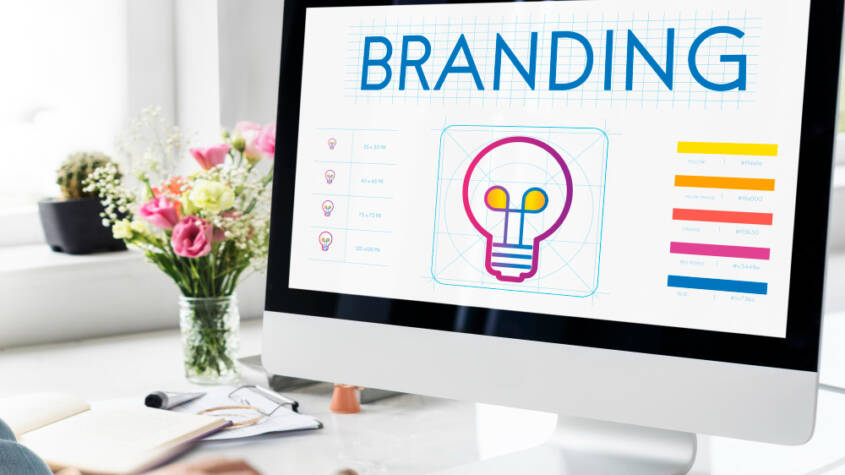
Custom branding solutions help businesses create a unique identity that sets them apart in their market. They extend beyond logos to include tailored strategies, packaging, and messaging that reflect the company’s core values and appeal directly to their target audience. Effective custom branding solutions align a company’s image with its goals, making it easier to build recognition and customer loyalty.
By investing in customized branding, companies can communicate their story clearly and consistently across all platforms. This approach ensures that every touchpoint, from product design to marketing materials, reinforces the brand’s message. Businesses gain the flexibility to adapt their branding as they grow or shift focus.
Custom branding solutions also help solve common challenges like standing out in crowded markets or responding to changing consumer preferences. These strategies bring coherence and professionalism, which boosts credibility and supports long-term success.
Custom Branding Solutions Overview
Custom branding solutions tailor a company’s visual and verbal identity to fit its specific goals and target audience. These solutions focus on distinct design elements, messaging, and brand consistency to create a unique market presence.
They improve customer recognition, foster loyalty, and support strategic business growth through carefully crafted brand assets.
What Are Custom Branding Solutions
Custom branding solutions involve creating unique, company-specific brand elements such as logos, color schemes, typography, and messaging frameworks. These elements reflect the company’s mission, values, and target market preferences.
They are developed through in-depth market research, competitor analysis, and audience insights to ensure relevance and differentiation. Custom branding solutions extend across digital platforms, packaging, advertising, and corporate communications, providing a coherent user experience.
The process includes iterative design, testing, and refinement to ensure the brand identity aligns precisely with business objectives and customer expectations.
Benefits of Personalized Branding
Personalized branding builds stronger emotional connections with customers by addressing their specific needs and preferences. It enhances brand recall and elevates perceived value compared to generic or off-the-shelf branding.
By clearly differentiating a business from competitors, personalized branding supports targeted marketing and increases customer trust. It also enables consistent messaging across all touchpoints, reinforcing brand reliability.
This approach can drive higher engagement rates and, ultimately, better financial performance by attracting and retaining loyal clients.
Key Elements of Custom Branding
Key elements of custom branding include:
- Logo Design: A distinctive visual mark representing the company.
- Color Palette: A consistent set of colors that evoke specific emotions and associations.
- Typography: Font styles that reflect brand personality and readability.
- Brand Voice: The tone and style of communication tailored to the target audience.
- Imagery and Graphics: Visual content aligned with brand identity.
- Brand Guidelines: A document outlining proper use to ensure consistency.
These components work collectively to build a coherent and recognizable brand identity. They are regularly reviewed and updated as the company evolves or market trends change.
Implementing Effective Custom Branding
Effective custom branding requires a clear visual identity, a well-defined brand message, and trusted collaborators. These elements ensure a consistent presence that resonates with the target audience and supports business objectives.
Tailoring Visual Identity
Visual identity is the foundation of custom branding. It includes logos, color schemes, typography, and design elements that reflect a brand’s personality. Consistency across channels enhances recognition and builds trust.
Businesses should develop a style guide that outlines correct logo usage, color codes, and font details. This ensures uniformity from packaging to websites and social media.
Key components to consider:
- Logo design that aligns with brand values
- Color palettes chosen for emotional impact
- Fonts that maintain readability and style
- Adaptability across digital and print media
Strategic Brand Messaging
Brand messaging communicates the company’s value proposition clearly and concisely. It addresses the target audience’s needs and positions the business within its industry.
Effective messaging includes a unique selling proposition (USP), tone of voice, and key messages tailored to customer segments. It guides content creation for marketing materials, advertisements, and customer interactions.
A focused brand message increases engagement and supports long-term loyalty by making the brand memorable and relevant.
Selecting the Right Branding Partners
Choosing experienced branding partners is critical for successful implementation. These may include designers, marketers, and agencies specializing in brand development.
Businesses should evaluate partners based on:
- Portfolio relevance
- Industry experience
- Communication skills
- Ability to meet deadlines and budgets
Collaboration with the right team ensures the vision is accurately translated into visuals and messaging. Transparent workflows and regular updates are essential to maintain alignment and quality throughout the project.
Best Locations to Do Wedding Videography in Essex: Tips from an Essex Wedding Videographer
There’s no question that pictures can help you remember one of the best days of your…








